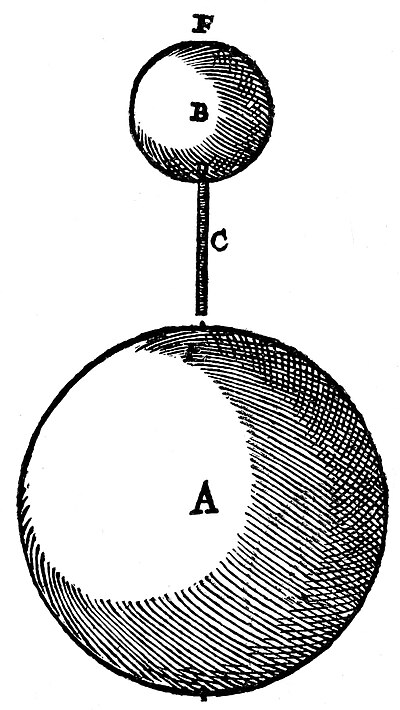On the Magnet/II-34
CHAP. XXXIIII.
Why a Loadstone should be stronger in its poles
in a different ratio; as well in the Northern
regions as in the Southern.
 he extraordinary magnetick virtue of the earth is * remarkably demonstrated by the subtility of the following magnetical experiment. Let there be given a terrella of no contemptible power, or a long loadstone with equal cones as polar extremities; but in any other shape which is not exactly round error is easy, and the experiment difficult. In the Northern regions, raise the true North pole of the terrella above the horizon straight toward the zenith; it is demonstrable that it raises up a larger iron spike on its North pole, than the South pole of the same terrella is able to raise, when turned in the same way toward the highest point of the sky. The same thing is shown by a small terrella placed in the same way above a larger.
he extraordinary magnetick virtue of the earth is * remarkably demonstrated by the subtility of the following magnetical experiment. Let there be given a terrella of no contemptible power, or a long loadstone with equal cones as polar extremities; but in any other shape which is not exactly round error is easy, and the experiment difficult. In the Northern regions, raise the true North pole of the terrella above the horizon straight toward the zenith; it is demonstrable that it raises up a larger iron spike on its North pole, than the South pole of the same terrella is able to raise, when turned in the same way toward the highest point of the sky. The same thing is shown by a small terrella placed in the same way above a larger.

Let a b be the earth or a somewhat large terrella, also a b a smaller terrella. There is set up above the Northern pole of the smaller terrella a spike larger than the pole b of the smaller terrella can raise, if it is turned round to the higher parts. And the pole a of the smaller terrella has its strength from the larger, declining from the Zenith to the plane of the horizon or to the level. But now, if, * leaving the terrella disposed in the same way, you bring a piece of iron to the lower and Southern pole, it will attract and retain a greater weight than the Boreal pole could, if it were turned round to the lower parts. Which thing is demonstrated thus: let A be the earth or a terrella; E the Boreal pole or some place in some great latitude; B a rather large terrella above the earth or a smaller terrella on the top of a larger; D its Southern pole. It is manifest that D (the Southern pole) attracts a larger piece of iron, C, than F (the Boreal pole) will be able to, if it is turned round downward to the position D, toward the earth or the terrella in the Northern regions.

Magneticks acquire strength through magneticks, if they are properly placed according to their nature, in near neighbourhood and within the orbe of virtue. Wherefore when a terrella is placed on the earth or on a terrella, so that its Southern pole is turned round toward the Northern pole, its Northern pole, however, turned away from the Northern pole, the influence and strength of its poles are increased. And so the Northern pole of a terrella in such a position lifts up a larger spike than the Southern pole, if the Southern pole is turned away. Similarly the Southern pole in a proper and natural arrangement, acquiring strength from the earth or from a larger terrella, attracts and retains larger rods of iron. In * the other part of the terrestrial globe toward the South, as also in the Austral portion of a terrella, the reasoning is converse; for the Southern pole of the terrella being turned away is more robust, as also the Northern pole when turned round. The more a region on the earth is distant from the æquinoctial (as also in a larger terrella), the larger is the accession of strength perceived; near the æquator, indeed, the difference is small, but on the æquator itself null; at the poles finally it is greatest.
